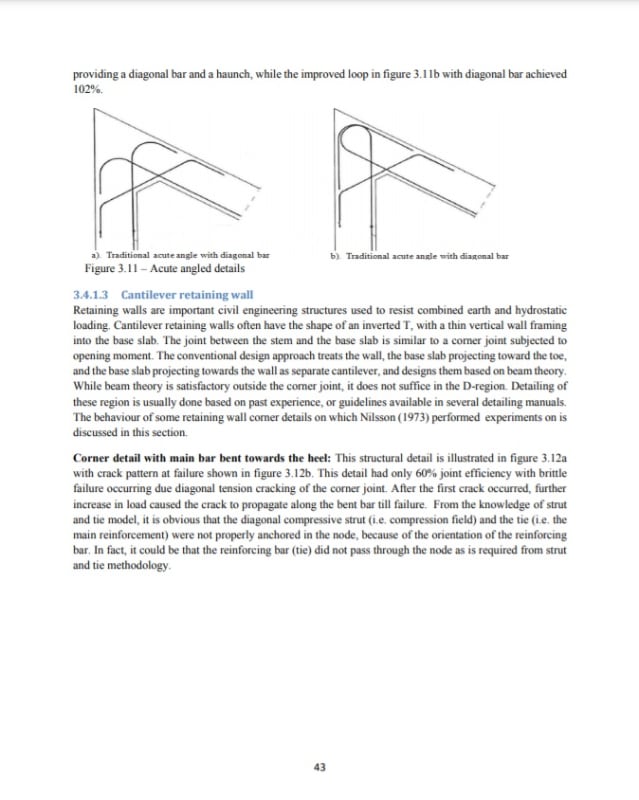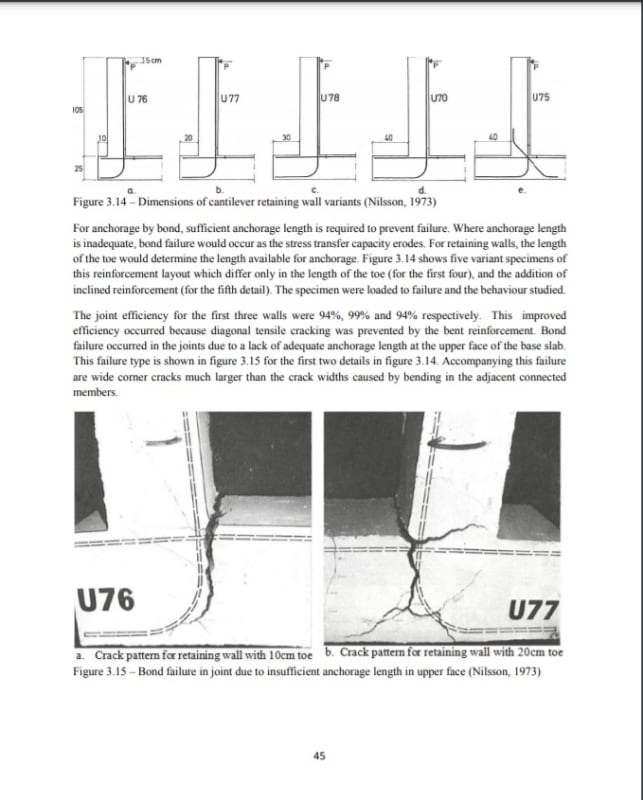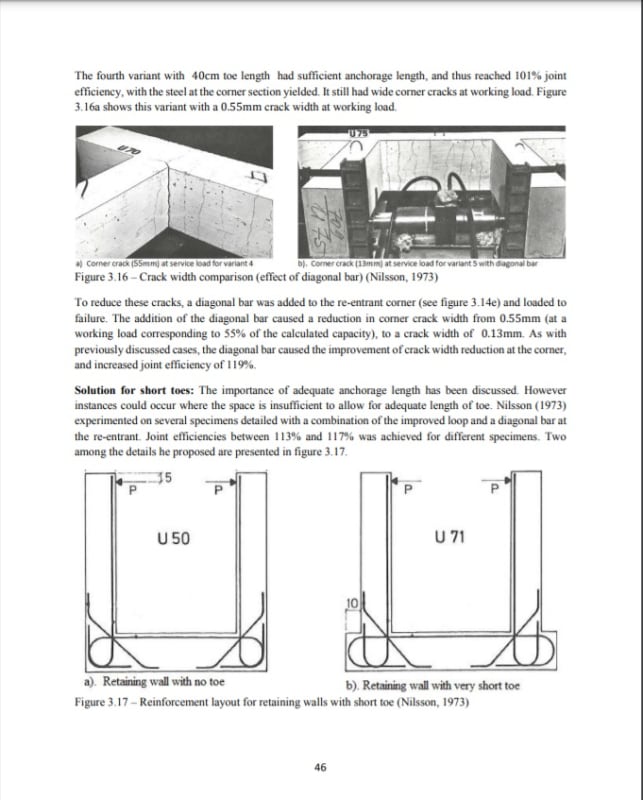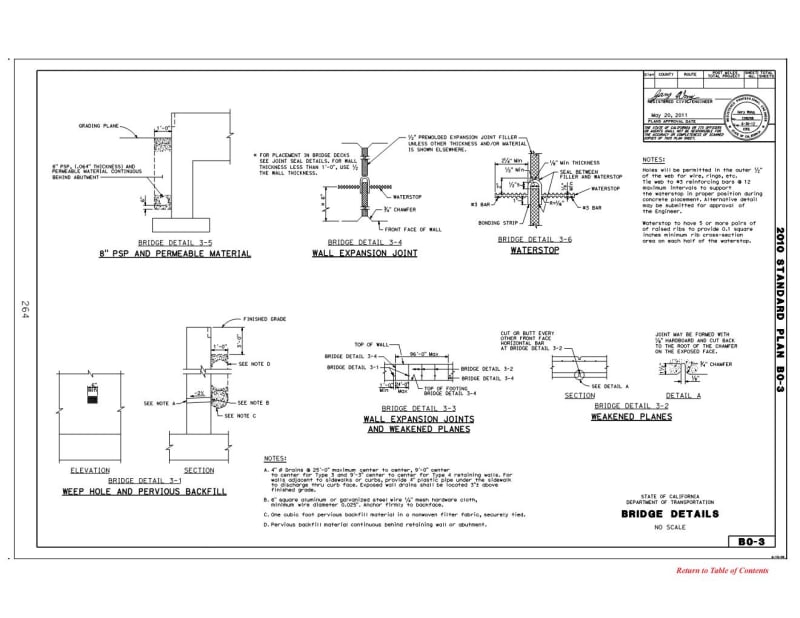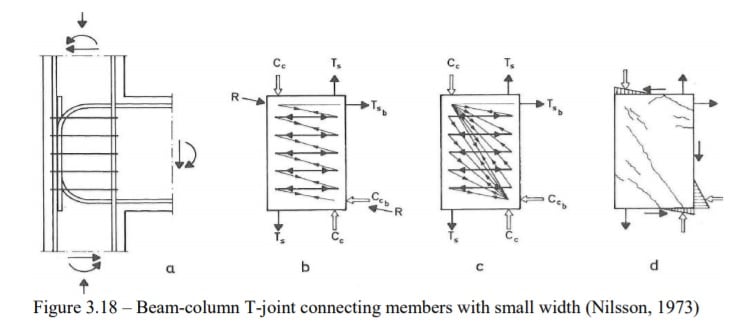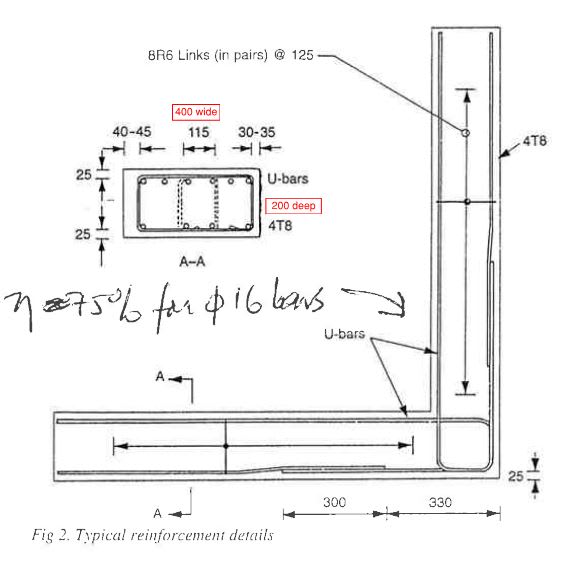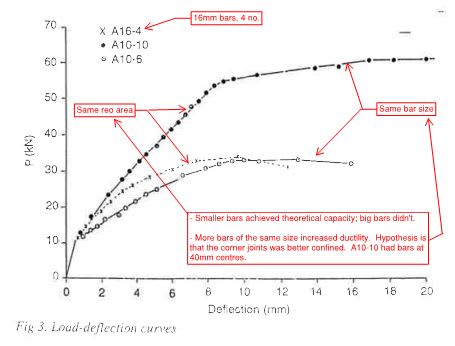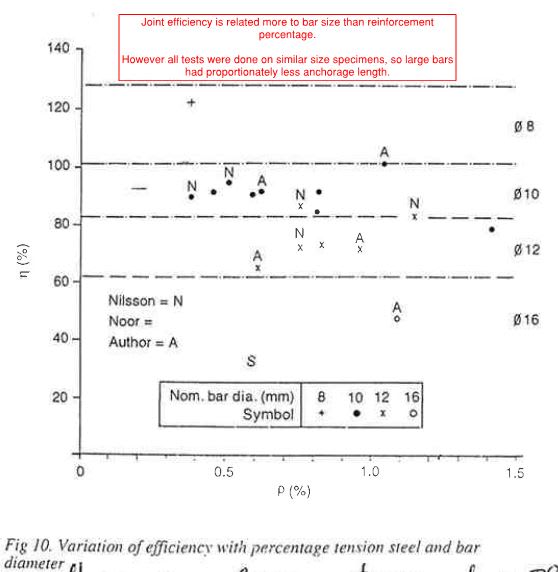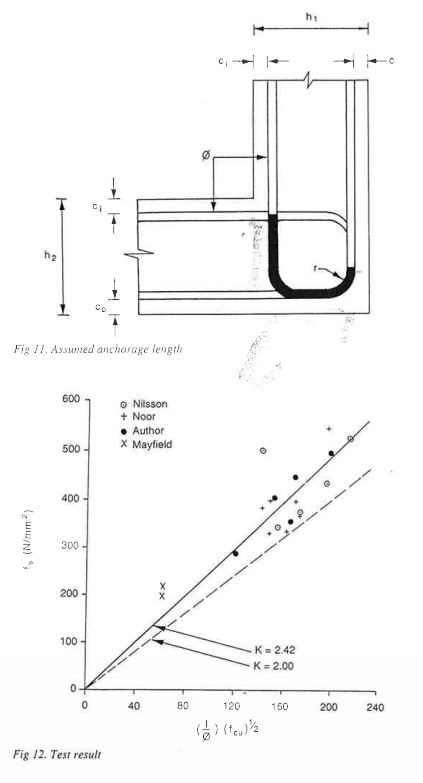Hi everyone, after lurking around the forum here for a few years I finally made a profile. I recently broke away from the small structural engineering firm (almost exclusively light-frame residential projects) I was at to start my own firm. I hope to contribute a little back to the engineering community here since many of your answers have helped me on projects I've worked on. Anyway...
I'm designing a 12' tall retaining wall pretty much right up against the property line in the client's backyard. I have a geotechnical report for this one so I'm using all the values they gave me in the report. I have attached the design that I've come up with so far. I have two questions...
1) At what point does such a wide heel on the footing stop helping? Can I really count on a 7'-6" wide heel to act as one unit? Let's say I had a 20' wide heel, it seems obvious that at a certain point the heel is so far away from the wall itself that it's not doing anything to help with overturning, bearing, etc.
2) Are you aware of places in any relevant code books (IBC, ACI, etc.) that gives insights on drainage design for retaining walls? I feel confident in the drainage I have called out on the detail (drain rock, perforated pipe, etc.) but I'm wondering if there is any sort of standard to reference when designing for drainage?
Here's the link for the retaining wall detail: Link
I'm designing a 12' tall retaining wall pretty much right up against the property line in the client's backyard. I have a geotechnical report for this one so I'm using all the values they gave me in the report. I have attached the design that I've come up with so far. I have two questions...
1) At what point does such a wide heel on the footing stop helping? Can I really count on a 7'-6" wide heel to act as one unit? Let's say I had a 20' wide heel, it seems obvious that at a certain point the heel is so far away from the wall itself that it's not doing anything to help with overturning, bearing, etc.
2) Are you aware of places in any relevant code books (IBC, ACI, etc.) that gives insights on drainage design for retaining walls? I feel confident in the drainage I have called out on the detail (drain rock, perforated pipe, etc.) but I'm wondering if there is any sort of standard to reference when designing for drainage?
Here's the link for the retaining wall detail: Link

